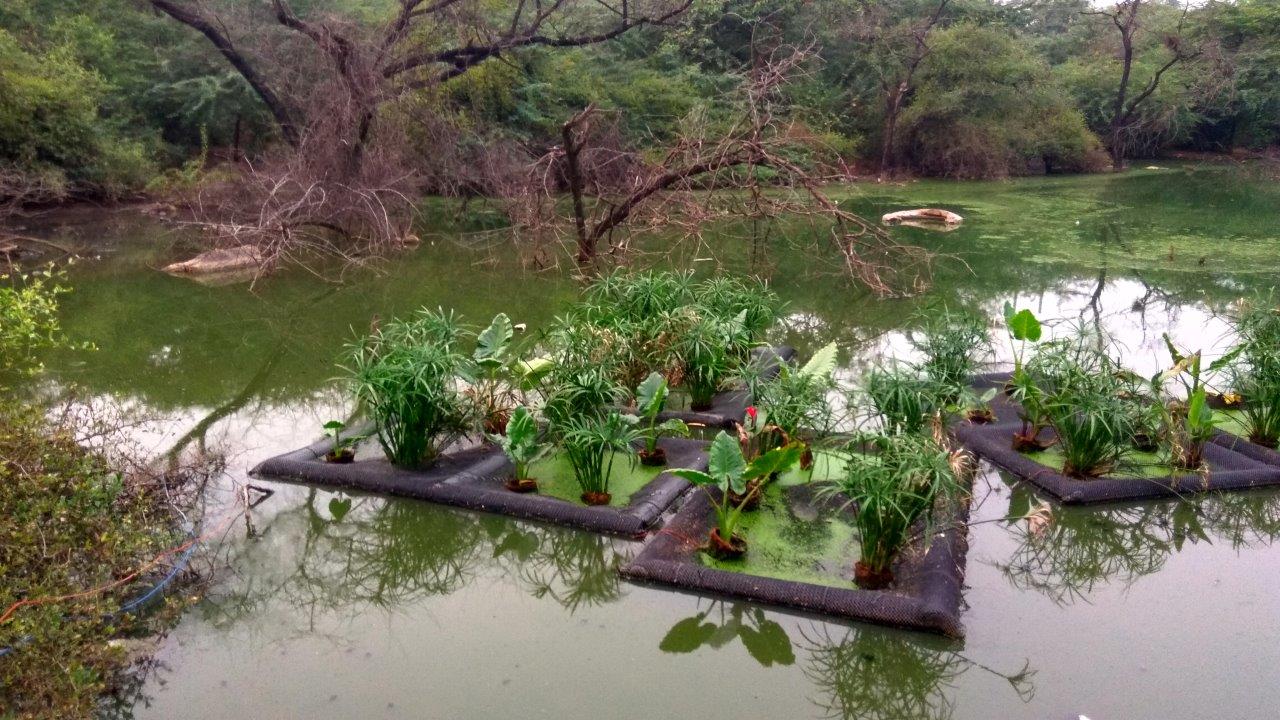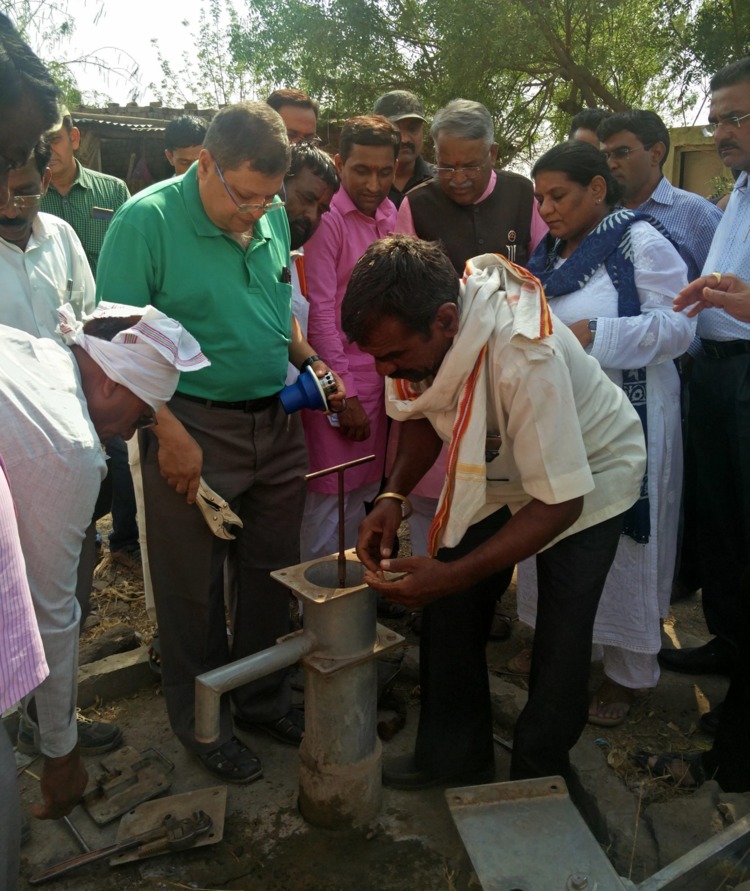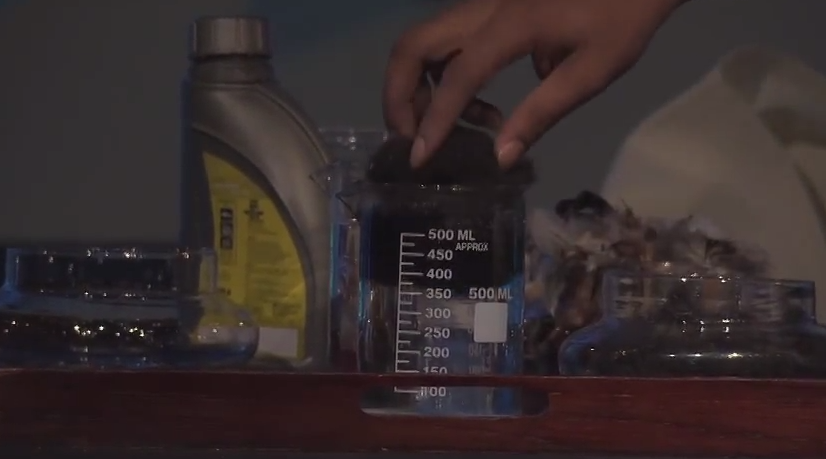Wetlands, Human Hair & More: 5 Innovations By Indians That Curb Water Pollution!
At just 13, Assam's Nikhilesh Das from Assam came up with an ingenious way of using human hair to clean polluting oil spills. Check out four other innovations that are just as brilliant! #WaterActionDecade #Innovation

India has only about 4 per cent of the world’s renewable water resources but is home to nearly 18 per cent of the world’s population. And as the country continues to urbanise, its water bodies are getting toxic. Around 70 per cent of surface water in India is unfit for consumption, and almost 40 million litres of wastewater enters rivers and other water bodies daily.
The cost of environmental degradation in India is estimated to be Rs 3.75 trillion a year, and the health costs are alone approximately Rs 470-610 billion.
Here’s a look at five of them:
1) Turning Sewage Water Into Drinkable Water

This organic water filter developed by Anto P Biju and Thomas Cyriac, is the size of an index finger, costs just Rs 10, and can convert up to 30 litres of impure water into freshwater within a few hours using activated carbon.
On putting the purifier in any water container, pores from contaminated water that act as micro-reservoirs are fixed over a disc inside the cartridge. It eliminates foul smell, harmful metals and colours from the water. Moreover, the technology adds minerals that improve the immune system. The best part? The cartridge in the purifier that costs around Rs 60 has to be replaced every five years, which means there is no maintenance or recurring cost.
A from Palai town, who developed the device, had used 200 such purifiers during the 2018 Kerala floods in the relief camps that provided safe drinking water to thousands of displaced victims.
Read more about the device here.
2) Using Floating Wetlands to Make Water Bodies Pollutant-Free

Tarun Sebastian Nanda, an ecological engineer, is using a natural way to clean water bodies in Delhi through his ‘Adopt an Island’ initiative.
He is constructing floating wetlands by using aquatic plants. These plants are placed on buoyant mats made from drainage pipes and discarded soda bottles.
When the island is placed on the surface water, they absorb manganese, iron, aluminium and other contaminants through their roots and foliage, thus purifying the polluted water. These wetlands also discourage the growth of algae and help improve the overall ecosystem.
Read more about Tarun’s initiatives here.
3) Purification of Groundwater Within 30 Minutes

Most farmers are heavily dependent on groundwater to fulfil their water needs to grow food. However, using polluted groundwater can lead to water-borne diseases.
To address this issue, Anjan Mukherjee, a former marine chief engineer, has developed the Taraltec Disinfection Reactor.
It is a device that can be installed inside a hand pump or motorised borewell, and it will purify the contaminated water in 30 minutes by killing 99% of the microbes present in it.
The device does not require electricity or fuel to function and hence, there are no maintenance costs.
“The device converts the kinetic energy of the fluid into millions of targeted microbubbles each acting as localised reactors. This generates extreme heat, pressure and turbulence that releases intense energy packets during the collapse of bubbles. The resultant shockwave, marked by a bang sound, lacerates and kills the microbes. The water, which is 99% safer than it was earlier, then emerges from the borewell or pump into the hands of those drawing it,” explains Mukherjee.
Read more about the invention here.
4) Treating Water With Human Hair

At just 13, Nikhilesh Das from Assam came up with an indigenous way to use human hair to clean oil spills in water. He mixed motor oil and lubricant with water in a beaker. As the oil formed a layer on top, he deposited human hair and saw how it absorbed 90 per cent of the oil from water within 30 seconds.
His innovation even won an award from former President, Pratibha Patil, in 2009.
5) Using AI and Robotics to Solve Water Woes

Using artificial intelligence and robotics, Asim Bhalerao and Nidhi Jain have been instrumental in diverting 600 MLD (Million Liters a Day) of raw sewage from entering water bodies and prevented over 5,600 hours of manual scavenging.
The couple has developed a robot that can map and inspect underground pipelines. The collected data identifies structural defects, operations and maintenance failure modes that makes it easier for the authorities to fix them.
“Solutions are expected to be cost effective, relevant , while being highly scalable and intrinsically safe to operate, in extremely hazardous conditions. Robotics and AI based solutions, that are developed with a deep understanding of problems on the ground, will be key in improving water treatment and water reuse,” explains Asim.
They have also come up with a drone that identifies similar problems in buildings, slums, pipelines, roads and villages.
“We use AI and robotics to automate pipeline mapping and health assessment. We also use drones and AI for crop pattern analysis, identifying different crops and water sources for effective farm management,” shares Nidhi.
Featured Image Source: Flickr
Know more about the ATL Tinkering Innovation Marathon here.

(Edited by Gayatri Mishra)
Like this story? Or have something to share?
Write to us: [email protected]
Connect with us on Facebook and Twitter.
If you found our stories insightful, informative, or even just enjoyable, we invite you to consider making a voluntary payment to support the work we do at The Better India. Your contribution helps us continue producing quality content that educates, inspires, and drives positive change.
Choose one of the payment options below for your contribution-
By paying for the stories you value, you directly contribute to sustaining our efforts focused on making a difference in the world. Together, let’s ensure that impactful stories continue to be told and shared, enriching lives and communities alike.
Thank you for your support. Here are some frequently asked questions you might find helpful to know why you are contributing?


This story made me
-
97
-
121
-
89
-
167











